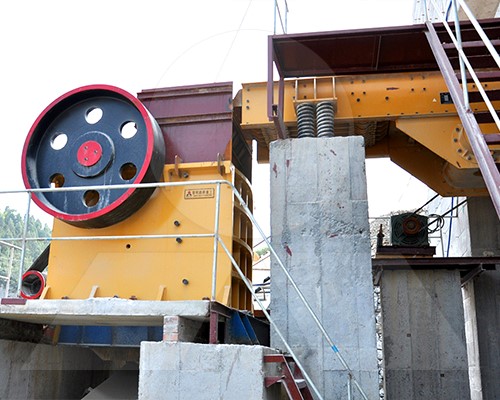The Indispensable Role of a Jaw Crusher in Railway Ballast Production
The safety and stability of a railway track depend on one crucial component: the ballast. This layer of crushed stone provides a solid foundation, ensuring proper drainage and distributing the immense weight and vibrations from passing trains. Producing this specialized material is a demanding process that begins with one powerful machine: the jaw crusher. Its unique characteristics make it the indispensable first step in railway stone production, setting the stage for the high-quality aggregate required by the rail industry.
This article explores the critical role of a jaw crusher in the manufacturing of railway ballast, from its function as a primary crusher to its place in the overall production line.

Why Ballast Production Requires a Jaw Crusher
Railway ballast is not just any crushed stone. It must meet stringent specifications for size, shape, hardness, and durability. This material is typically sourced from quarries that extract hard, tough rock like granite, basalt, or quartzite.
- Hard Rock Challenge: The rock used for ballast is extremely hard and abrasive. It must be able to withstand the incredible forces of passing trains and resist weathering for decades. A primary crusher must be built to handle this tough feed.
- Initial Size Reduction: The raw material from a quarry face often comes in very large, irregular boulders that cannot be processed by other machines. The crushing line needs a powerful machine to perform the initial size reduction.
The jaw crusher is perfectly designed for this task. It operates using a compression method, where material is crushed between a fixed and a moving jaw. Its robust structure and simple, powerful mechanism make it ideal for breaking down the largest, hardest rock with minimal wear and tear, ensuring a reliable starting point for the entire operation.
The Jaw Crusher’s Role as a Primary Crusher
In a typical railway ballast crushing plant, the jaw crusher is positioned as the primary crusher, performing the first and most vital stage of size reduction.
- Initial Crushing: Raw material is fed into the jaw crusher’s chamber, where the powerful jaw plates crush it into a smaller, more uniform size. This process reduces large boulders to a size that can be handled by the next stage of crushing.
- High Throughput: A jaw crusher is designed for high-volume processing. In railway stone production, where immense quantities of material are required for long stretches of track, the ability to process a high tonnage per hour is essential for meeting production goals.
- Efficiency: By performing the initial size reduction, the jaw crusher prepares the material for the more refined crushing processes that follow. This allows the secondary and tertiary crushers to work more efficiently, as they don’t have to handle oversized feed.
The Complete Ballast Production Line
The jaw crusher is a key link in a multi-stage production chain that ensures the final product meets industry standards. After the initial crushing, the material typically proceeds through these stages:
- Secondary Crushing: The output from the jaw crusher is fed into a cone crusher or an impact crusher. This stage further reduces the rock size.
- Tertiary Crushing & Shaping: A final stage crusher, often a vertical shaft impact (VSI) crusher, is used to achieve the final, precise size and, most importantly, the cubical, angular shape required for ballast to lock together and create a stable track bed.
- Screening: The material is then screened to remove any fines and ensure that the final product meets the exact size specifications.
Conclusion
The jaw crusher is not just a piece of quarry equipment; it is the foundational component of any successful railway ballast crushing operation. By expertly handling the initial crushing of the hardest rock, it enables the entire production line to operate efficiently, safely, and cost-effectively. Its role as a primary crusher is critical for creating the high-quality aggregate that supports the world’s railway networks, making it an indispensable asset in the construction and maintenance of modern rail infrastructure.
- > The Application of Vertical Roller Crushers in the Cement Industry
- > Application of Cone Crusher in Secondary and Tertiary Crushing in Metal Ore Beneficiation Process
- > Impact Crusher for Construction Waste Recycling in Australia
- > Key Features of Jaw Crushers in Tanzania
- > Introduction to Iron Ore Beneficiation Process: 70 Tons per Hour Mobile Impact Crushing Plant
- > The Application of Mobile Jaw Crushers in Cambodia: Enhancing Efficiency in Mining and Construction
- > Basalt Rock Crushers in New Zealand: A Vital Tool for Construction and Mining
- > Mobile Impact Crushers in Argentina: A Key Solution for Efficient Material Processing


Online




Message
